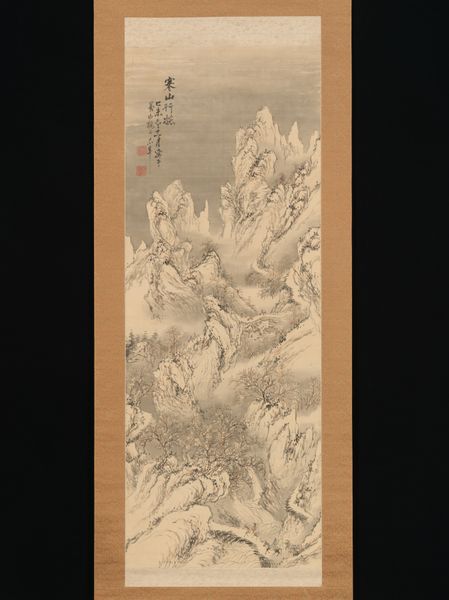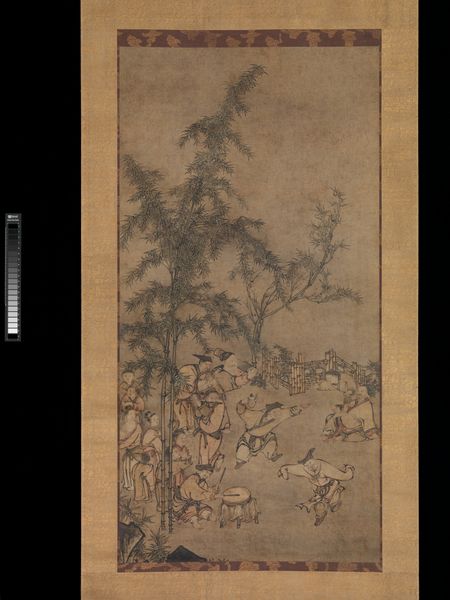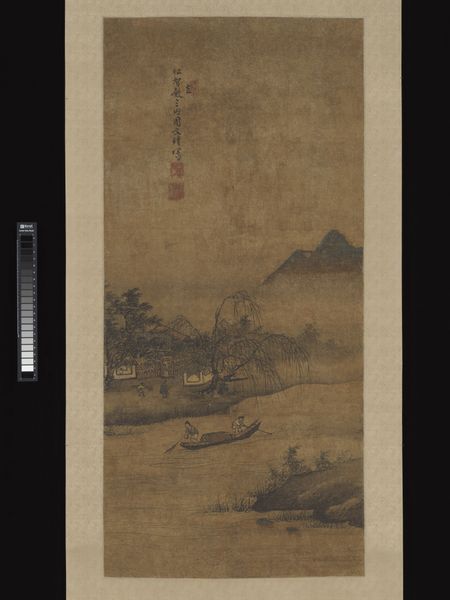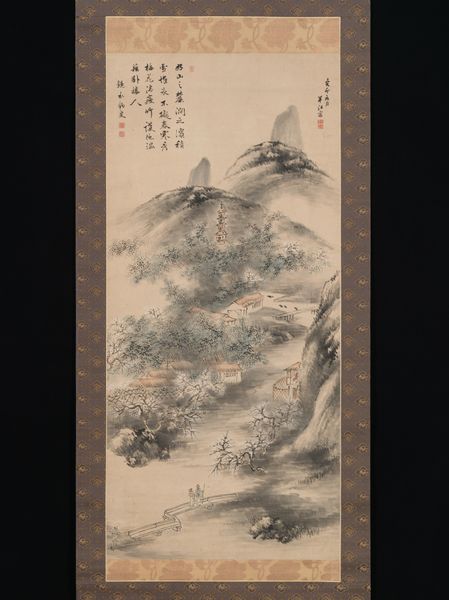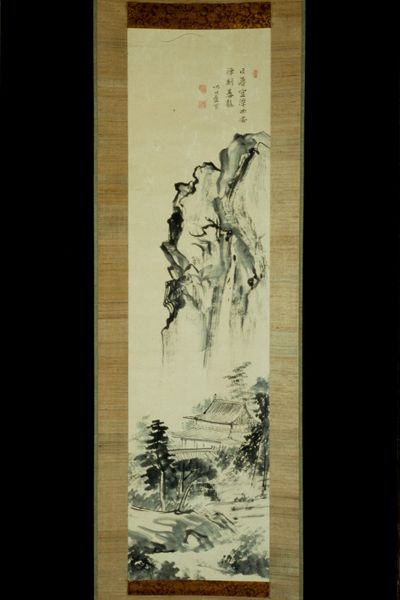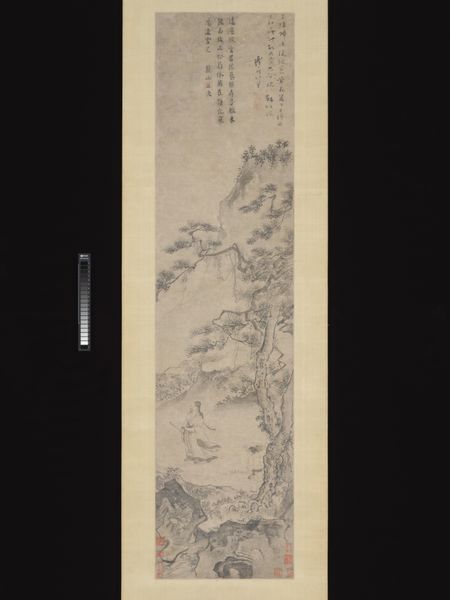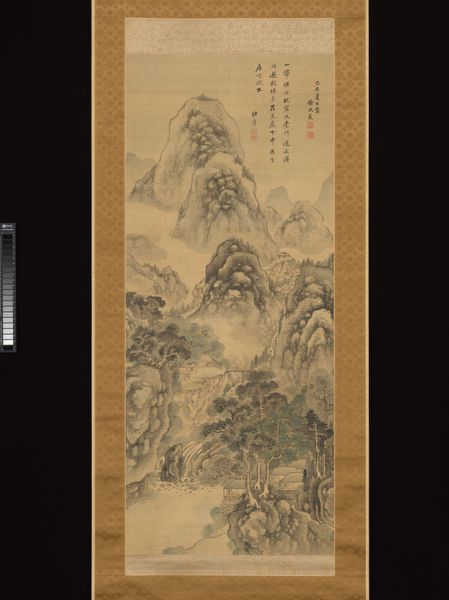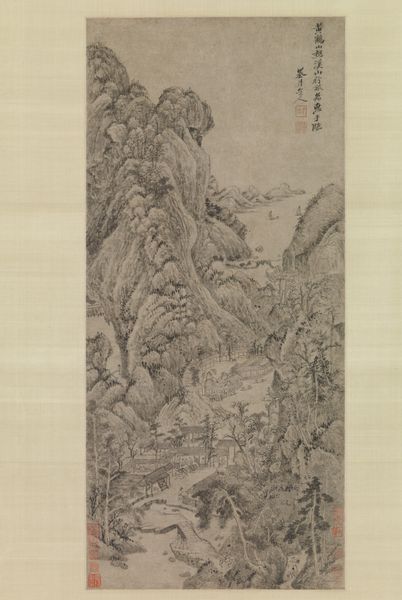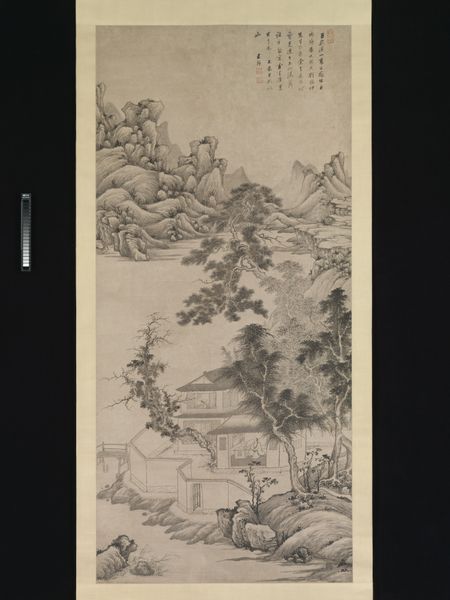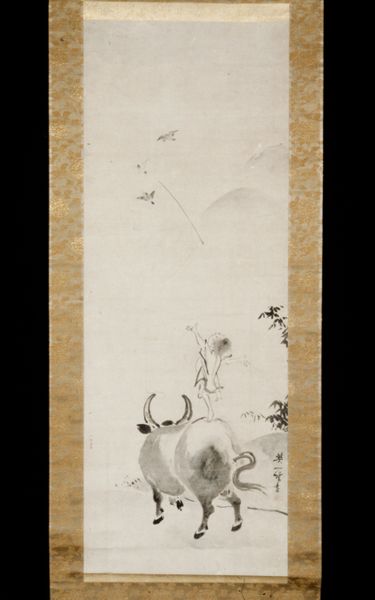
Herb Gatherer in the Mountains 1767 - 1790
0:00
0:00
tempera, painting, ink
#
tempera
#
painting
#
asian-art
#
landscape
#
figuration
#
oil painting
#
ink
#
earthy tone
Dimensions: Image: 44 1/8 × 16 1/8 in. (112.1 × 41 cm) Overall with mounting: 78 7/8 × 21 5/8 in. (200.3 × 54.9 cm)
Copyright: Public Domain
Editor: We're looking at "Herb Gatherer in the Mountains" by Matsumura Goshun, painted in ink and tempera around 1767-1790. It has such a quiet and contemplative mood. The horses almost blend into the landscape. What strikes you about this work? Curator: It's fascinating how Goshun intertwines human activity with the natural world, isn't it? Consider the historical context: this piece was created during a time of significant social and political change in Japan. The herb gatherer symbolizes a deep connection to the land, and perhaps even resistance to urbanization and the changing social order. Do you see the subtle commentary on humanity's relationship with nature, and how it reflects broader power dynamics? Editor: I hadn’t really considered it that way. I was just appreciating the serene scene and the gentle brushstrokes. Curator: Exactly, but that serenity isn't simply aesthetic. The conscious choice of depicting someone collecting herbs, a traditionally lower-class activity, within a landscape could be viewed as a subtle political statement. It celebrates a life lived in harmony with nature, subtly critiquing the excesses of urban life and the ruling classes. The figure, the flora, even the composition—they all contribute to a narrative questioning social hierarchies. Editor: So, it’s not just a beautiful landscape, but a statement about class and the value of traditional ways of life? Curator: Precisely! By depicting this humble scene, Goshun subtly challenges the dominant ideologies of his time, highlighting the intrinsic worth of those often marginalized in society. This connects directly with critical ideas concerning social justice and power imbalances. Editor: Wow, I’ll never look at landscape paintings the same way again. Curator: That’s the beauty of art history. It opens our eyes to these intricate connections, showing us how art can reflect, resist, and ultimately reshape our understanding of the world.
Comments
No comments
Be the first to comment and join the conversation on the ultimate creative platform.
